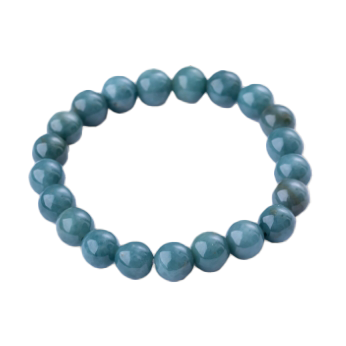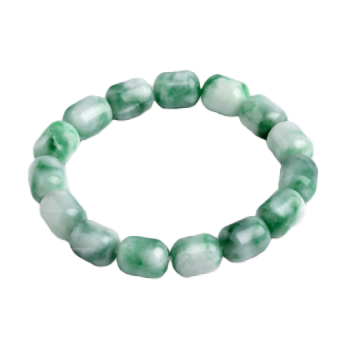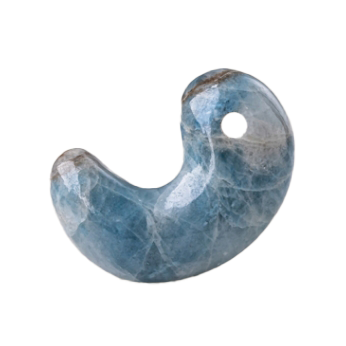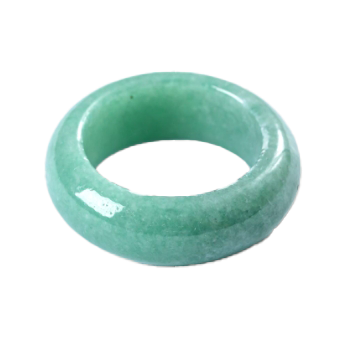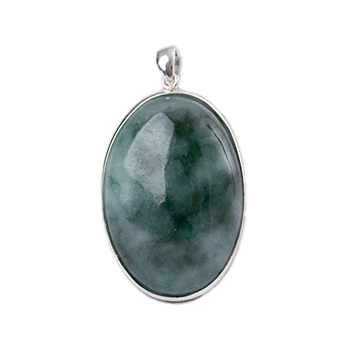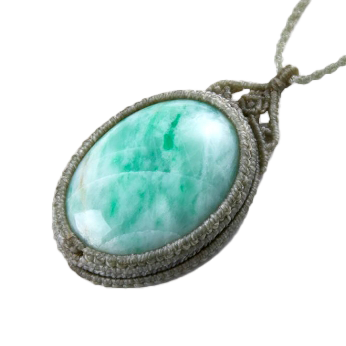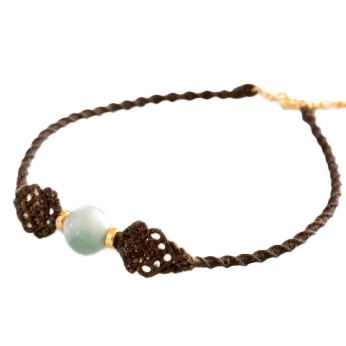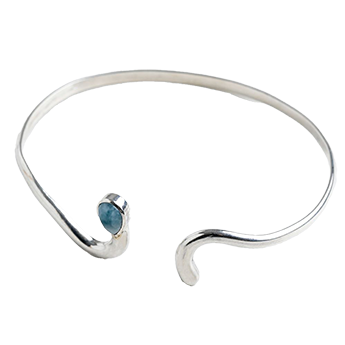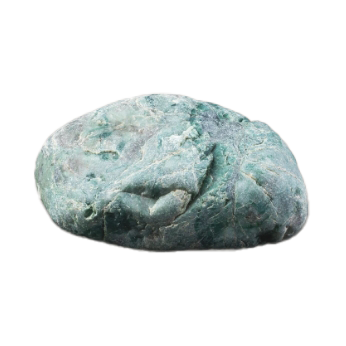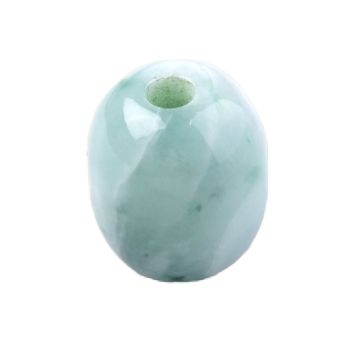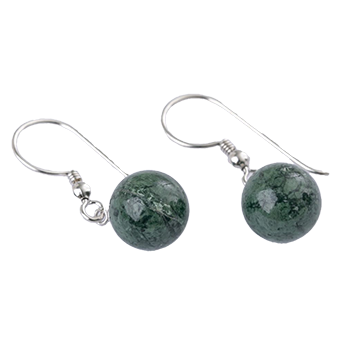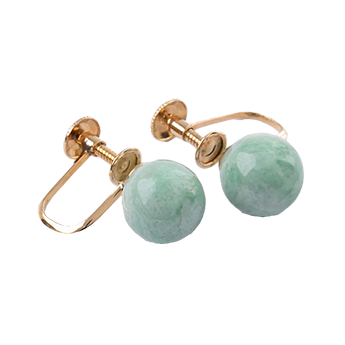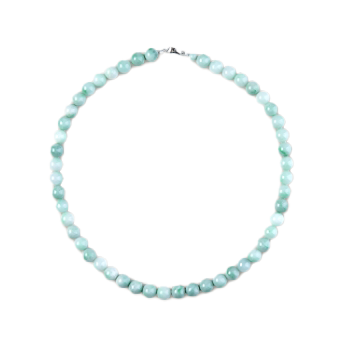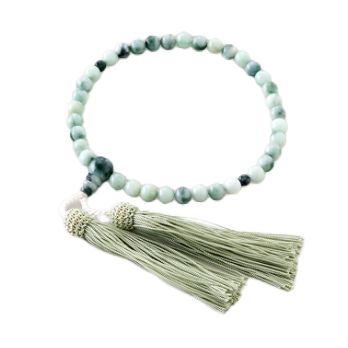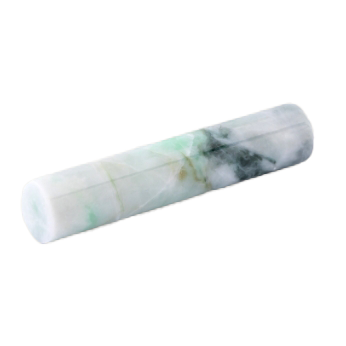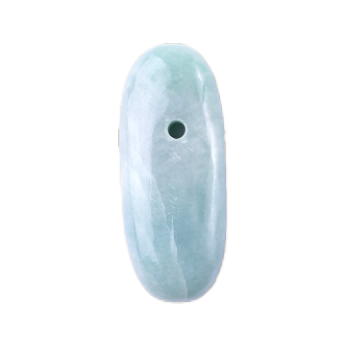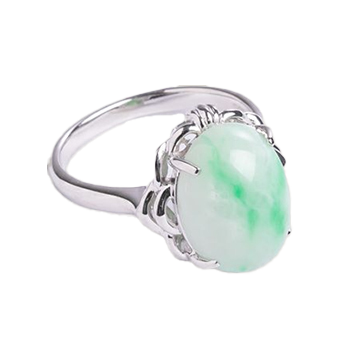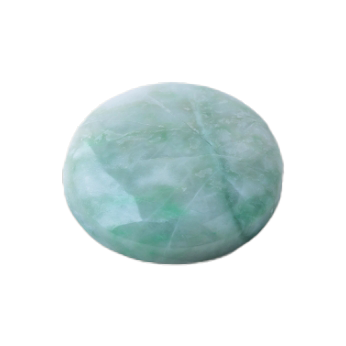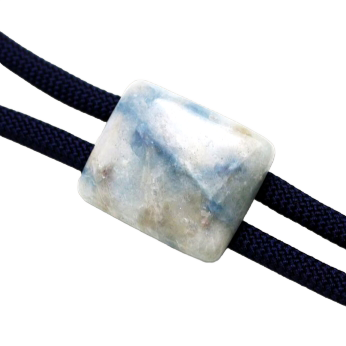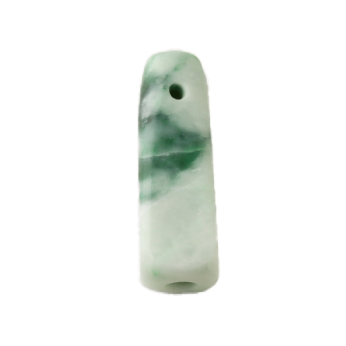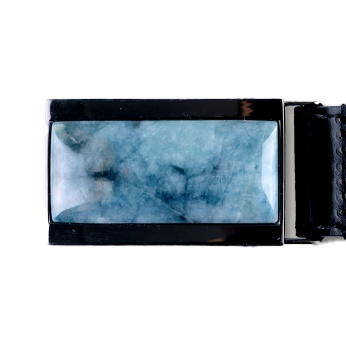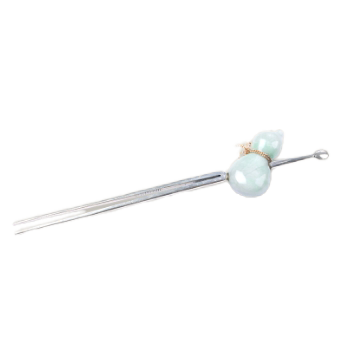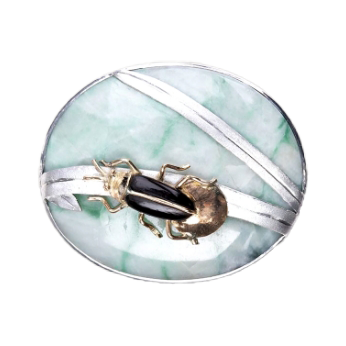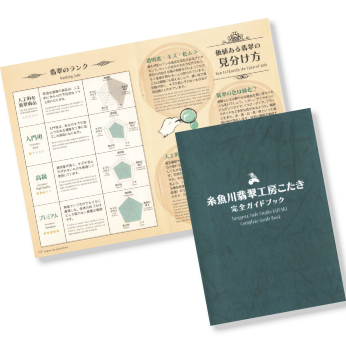Itoigawa Jade (Japanese Jadeite)
The Crystal of Nature's Landscape
Itoigawa Jade,
a gem exclusive to Japan
Jade, a stone revered globally since ancient times, holds different significance in various cultures. Some cherish it as a spiritual stone embodying natural energy, while others view it as a memorial stone offering prayers for souls' peace. However, two types of jade exist; jadeite (hard jade) and nephrite (soft jade), each carrying its unique scientific and cultural history.
Japan has the oldest jadeite culture. Miners extract the highest quality jadeite - Itoigawa Jade, in Itoigawa, a city on the northern side of the Japanese archipelago in Niigata Prefecture. The Itoigawa jade, born solely in the geologically unique subduction zone known as the Fossa Magna, symbolizes Japan's distinct culture and spirit. Japan declared it the national stone in 2016 for its symbolic representation of Japanese culture.
What is Itoigawa Jade?
The Crystal of Natural Landscape

The birth of primitive Earth 4.6 billion years ago marked the creation of jadeite pyroxene-containing rocks in various places as the Earth's core cooled. Further temperature drops prompted the continental split, stimulating orogeny and causing the formation of high-purity jade in an even more limited number of locations. One of these rare jades is the Itoigawa Jade, discovered over 5,000 years ago.
Unlike gems such as diamonds or rubies composed of a single mineral, Itoigawa Jade comprises various minerals. Multiple elements subtly incorporate into it, intermingling over time to generate intricate colors. It is a process beyond human control. The beauty of nature precisely shines because of its ever-changing appearance.
Itoigawa Jade in Historical Perspective
Japan, the Holder of the World's Oldest Jade Culture
Traces of jade's worldwide adoration since ancient times persist. Yet, Japan stands as the oldest culture in this context. The Early Jomon period (about 7,000 years ago) saw jade as polished stone tools*. By the Middle Jomon period (about 6,000 to 5,000 years ago), people started processing and trading jade as jewelry, such as Magatama.
Itoigawa Jade features in the mythologies chronicled in Kojiki, Japan's oldest existing book. The narrative tells of Izumo's god, Ookuninushi-no-Mikoto, proposing to Itoigawa's queen, Nunakawa-hime, who lived in the jade production region. The story suggests Ookuninushi-no-Mikoto desired Nunakawa-hime (and, by extension, the land of Itoigawa and its Jade) so much that he was willing to wait outside all night to win her over.

Statue of Nunakawa-hime, the queen who rules Itoigawa (Itoigawa City, Niigata Prefecture) Source: ja.wikipedia
The oldest historical texts of Japan, the "Kojiki" and "Nihon Shoki," document an event where the Sun Goddess Amaterasu (Amaterasu-oomikami) presented gifts to her grandson, Ninigi-no-Mikoto, during his heavenly descent. Among the three sacred treasures Amaterasu bestowed, one was a jade magatama, also known as Yasakani no Magatama. Successive emperors have since carefully preserved these treasures as symbols of the imperial throne.

The three sacred treasures. From the top: a mirror, a sword, and a magatama. Source: ja.wikipedia / 菊竹若狭 - 投稿者自身による著作物, CC 表示-継承 4.0 による
- Polished stone tools: Stone artisans produced these tools by grinding stone material against sand or other stones, creating a smooth surface. These tools were used to skin animals and scale fish.
- Amaterasu: Known as the most revered deity in Japan, she is believed to be an ancestor of the imperial family and symbolizes the sun, light, love, and truth.
- Descent of the Heavenly Grandchild: Under Amaterasu's command, this refers to the journey from heaven to earth to bring peace and prosperity to the land.
Itoigawa Jade from a Scientific Perspective
Jadeite and Nephrite
Jade includes "jadeite" and "nephrite," which are scientifically entirely different minerals. The term "jade" came into being before "jadeite." In the 16th century, indigenous people in Peru wore jade around their waists. Upon observing this, Spaniards mistook it for jewelry and named it "piedra de hijada," meaning the stone worn on the waist. This was translated into French as "pierre de l’ejade," and it is believed that the "l’ejade" part later became "jade" in English.
The Spaniards later learned that the stones served a medicinal purpose as warming stones for stomach ailments. To share this finding, they coined a phrase based on the stone's shape, "stone in the shape of a kidney." Latin translated this phrase into "lapis nephritis," which became the English "nephrite."
Until 1863, when the French mineralogist Damour discovered that jade consisted of two types: jadeite and nephrite, and that the two are completely different minerals, jade was essentially synonymous with nephrite.
Therefore, even in China, where nephrite culture had developed, jadeite was brought in from Burma after the 17th century and was confusedly referred to as jade, a situation that often still occurs today.
Jadeite, rich in jadeite pyroxene, forms only in restricted areas known as subduction zones. In contrast, Nephrite is a type of amphibole forming under standard conditions. Jedite is produced in a highly unusual low-pressure and high-temperature environment, with a pressure of 10,000 atmospheres and a temperature of 200 to 300 degrees Celsius. Conversely, Nephrite forms under about half the pressure (an estimated 5,000 atmospheres), ranging from 400℃ to 500℃. As a result, Nephrite is more abundant, with large deposits found in countries like the USA, Canada, New Zealand, Russia, China, and Taiwan. However, Jadeite is only found in a few areas worldwide, including Kachin State in Myanmar, Guatemala in Latin America, and Itoigawa in Japan. Due to its scarcity, Jadeite generally has a higher value than Nephrite.
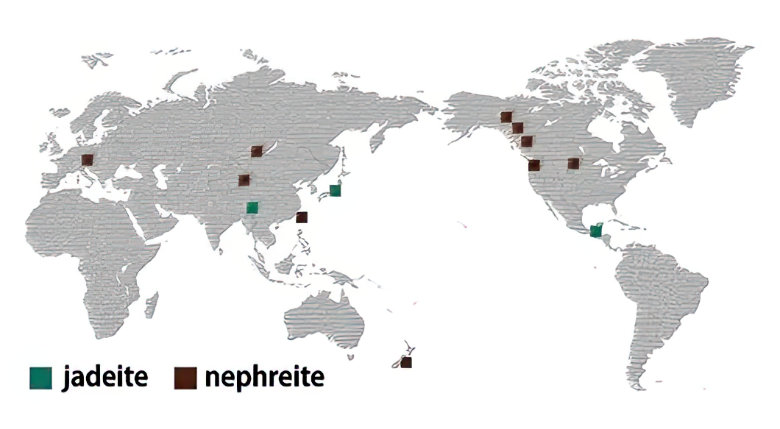
Locations where jadeite and nephrite are found.
Fossa Magna's Gift: The Birth of Itoigawa Jade, A Geologic Wonder
Meiji-era geologist Naumann named the Fossa Magna, a Latin term meaning "large trench." This colossal trench, rather than a mere dip in the land, signifies where colliding tectonic plates sink into the earth. New strata have built up over this trench, marking the Fossa Magna area.
The Fossa Magna region's geology originates from the Neogene period around 25 million years ago. In contrast, formations to the east and west hark back over 500 million years to the Mesozoic and Paleozoic eras.

Faults that developed due to Fossa Magna's compression opened a path for magma, facilitating the surfacing of minerals and jade-containing serpentine rocks. This accessibility led to the discovery of numerous minerals in Itoigawa City, positioned on the Fossa Magna's border.
The vast depression in Japan's Fossa Magna emerged around 20 million years ago when the eastern side of the Asian continent ruptured, separating the Japanese archipelago from the mainland.
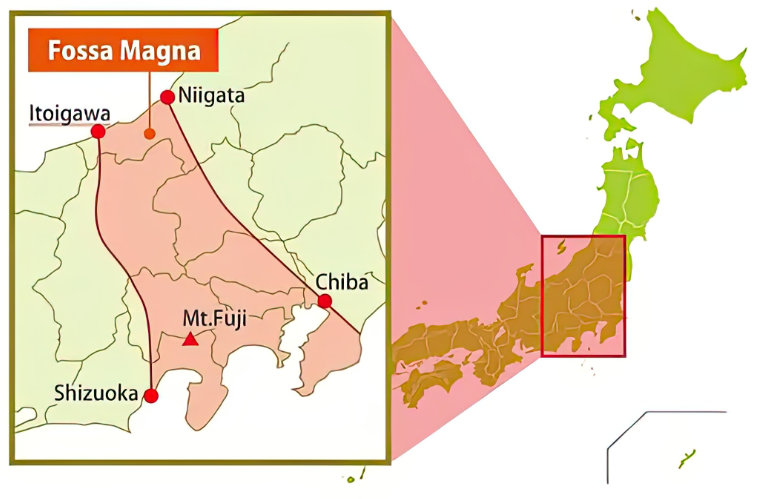
Situated directly above the Fossa Magna, Itoigawa boasts a geological structure unmatched worldwide. A series of fortunate events layered over the earth's split contributed to the creation of Itoigawa jade. Despite the region's harsh conditions, Itoigawa thrives due to the tremendous natural resources provided by active volcanic activity. This unique topography earned global recognition, leading to Itoigawa's designation as Japan's first Global Geopark in 2009.
Identifying Valuable Jade
Jade pieces often undergo artificial enhancement and treatment processes for improved color and beauty, making flawless jades available worldwide. Itoigawa jade, however, stands out with its limited production and procurement, thus simplifying the process of confirming its authenticity.
The value of natural Itoigawa jade is determined by its rarity. Rarity refers to "items with a supply that is limited relative to their demand." Even if an item is scarcely produced, if it's not popular, it cannot be considered to have a high rarity value.

Pyramid diagram of the rarity of Itoigawa jade
Premium
Specific regions in Itoigawa yield rare jade varieties, like the blue "Irikonsawa" or the translucent, pure white "Ice Jade," produced in much smaller quantities and popular.
High Quallity
While not specifically popular, like premium grade, this unique jade possesses various colors and patterns, including deep green, lavender, and blue. At Kotaki, this grade of jade is the most commonly handled, offering a rich variation in color, transparency, and luster. Among similar colors, those typically considered of high gem quality are popular. High gem quality depends on the quality of coloration and the amount of transparency and luster.

Chart of differences in color, transparency, and luster and their popularity
Basic
This refers to jade in relatively abundant colors such as white and light green or jade that is not of particularly high gem quality. The color, luster, and transparency are subdued, making it less attractive as a gemstone. However, it possesses sufficient beauty as a piece of natural jewelry.
Jade Colors Overview
While vibrant green often defines jade, it can showcase a spectrum of other colors: red, blue, white, black, and purple. White is also the primary color of the jade pyroxene that makes up jade, and We call those unmixed, pure white pieces 'Ice Jade.' They stand as highly valuable, on par with the deep green variety.

Recommended Occasions

Reflect on Ancient Times & Nature
Enjoy the stone's textures, reminding you of nature's beauty and ancient wishes placed on magatama.

Magatama A traditional talisman believed to bring luck and ward off disasters.

Bracelet A versatile accessory featuring Itoigawa jade beads, suitable for any occasion.

As a Personal Talisman
Keep the jade magatama, an ancient divine worship symbol, close as a unique protection charm.

Guardian StoneThis palm-sized stone can bring you strength in critical moments.

Macrame PendantWear this as a comforting talisman, providing warmth and emotional uplift

A Special Gift
Convey your best wishes and thoughts through Itoigawa jade, a thoughtful token of fortune for loved ones.

Magatama Shaped Macrame PendantAn unspoken expression of your wish for their wellbeing and happiness.

Hollowed-out RingA unique jade ring, a charming alternative to traditional metal ones, perfect for someone special.

Elevating Your Fashion
Simple yet striking, these accessories blend with any outfit, enhancing your style.

Silver RingA unisex piece created with a silversmith, combining silverwork and Itoigawa jade.

Jade Hairpin & ObidomeThese understated jade pieces add elegance and grace to traditional Japanese attire.
Testimonials
Itoigawa Jade: An Ideal Gift for Significant Individuals

I reside in Japan but have clients worldwide. To represent the unique values of Japan, I started selecting Itoigawa jade as a gift for essential individuals. The high value of Japanese-made jade always pleases its recipients. The jade's unique history, disappearing and reappearing over thousands of years and centuries, enhances its significance as a special gift. The reception exceeded my expectations. My clients, fervent admirers of Japanese culture, truly appreciate jade, a piece of this culture originating from Japan. Sometimes, some even call me to express their love for Itoigawa jade.
I frequently explore cultural insights on Mr. Kotaki's website and share them with these clients – details on the meanings, spirituality, and charisma of Itoigawa jade. Their fascination grows as they learn more about it.
Regrettably, I currently don't own any Itoigawa jade. I had a cherished jade ring but gave it to the one who admired it. Having numerous clients and constant social interaction leads many to discover and appreciate Itoigawa jade. Once I'm done gifting jade to clients and friends, I aim to buy a magatama. I eagerly await the day I can visit Mr. Kotaki's gallery and get a feel of his works.
---
Purchased items: 7 pieces (Magatama, Hollowed-out ring, Tubular bead)
Mr. Ekrem Ayna, Cellular Genetics Ph.D
Jade Artisan

Yoshiyuki Akahane: Itoigawa Jade Craftsman
As an Itoigawa jade craftsman, he handles everything from procuring raw stones to processing. He first started collecting jade in high school when he saw the joy on his mother's face upon receiving an Itoigawa jade ring from his father. In addition to jade crafting, Akahane also excels in swordsmanship, hunting, and photography.
His Craft: A Dedication
Jade, a natural material, offers unique expressions in each piece, even when similar in appearance. At Itoigawa Jade Studio Kotaki, we treat the jade's pattern and color as its personality, crafting pieces to highlight these attributes.

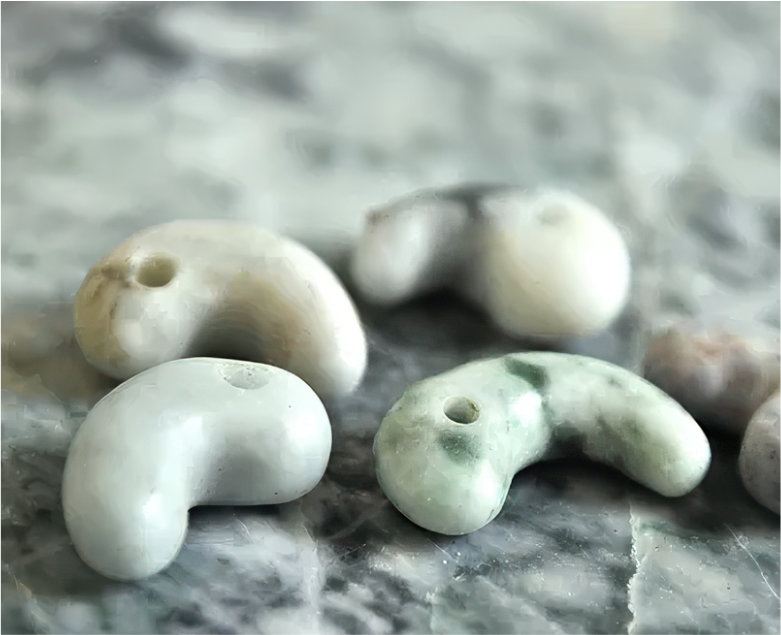
I am delighted that our studio has grown, allowing us to open an online shop and deliver our work to international customers. As such, it is essential to share the culture of Itoigawa jade with more people and continue this tradition. Only some countries still practice the millennia-old techniques for polishing raw stones. I've had the privilege to learn from many Itoigawa jade artisans, inheriting their polishing techniques and traditional tools. This experience fills me with gratitude, inspiring me to share Japanese culture and history through Itoigawa jade.
Gallery Introduction
Tea Room, Matsumoto City, Nagano Prefecture
The gallery showcases a variety of items, including magatama, bracelets, tubular beads, and small raw stones. Please note that we do not display the works from our online shop in the gallery. Please get in touch with us in advance if you wish to see a particular piece.

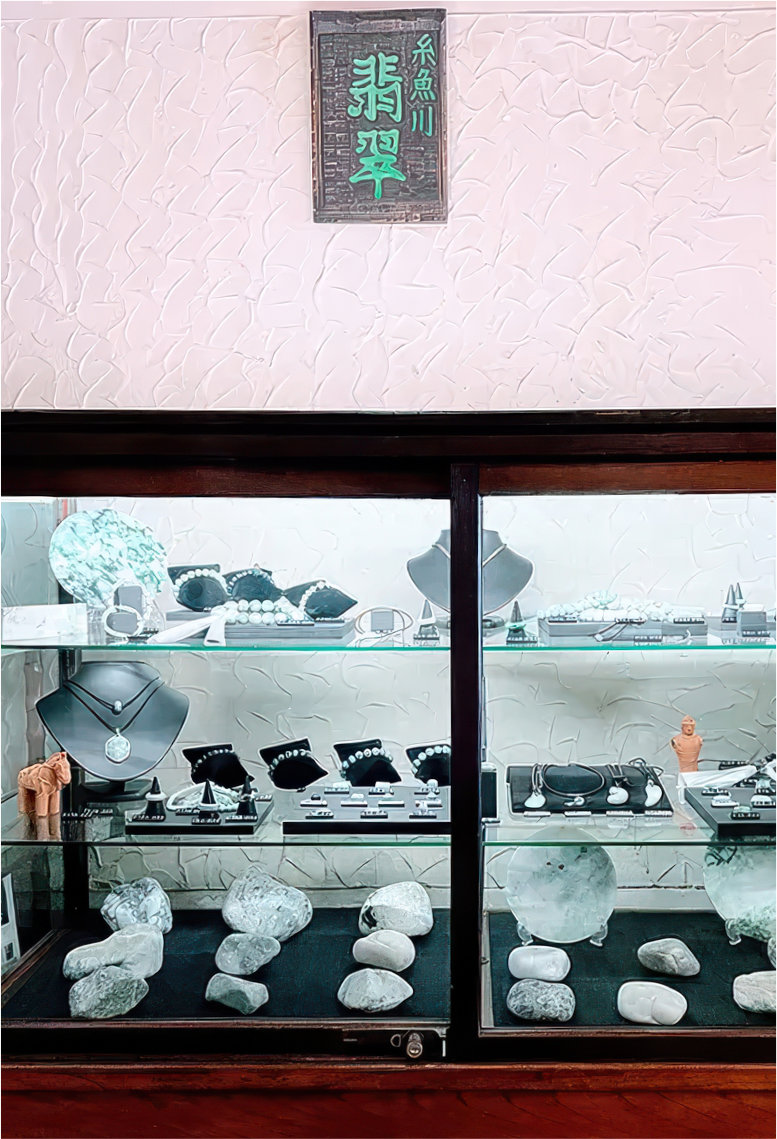
Access
You'll find the Itoigawa Jade Studio Kotaki gallery in Matsumoto City, Nagano Prefecture. With a convenient location, it's just a 10-minute walk from both Matsumoto Station and Matsumoto Castle. The gallery is located in a corner of a café.
2-2-5 Ote, Matsumoto, Nagano 390-0874 JAPAN
6-minute walk from Matsumoto Station, Castle Exit
(477m from Matsumoto Station)
FAQ
I'd like to see the products. Where can I do that?
You can view our products on the Itoigawa Jade Studio KOTAKI website. We ship worldwide, so feel free to check it out. You also have the opportunity to see our products in person at our gallery.
I want to know more about Itoigawa jade. Where can I find that information?
You can find detailed information about the allure and history of jade in our online shop, Itoigawa Jade Studio KOTAKI.You can find detailed information about the allure and history of jade in our online shop at Itoigawa Jade Kotaki Studio.
How will the products be delivered?
If you're ordering from overseas, "World Shopping Biz" is the service we recommend. They will purchase and ship your products from Japan, delivering them anywhere. You can find more details about their purchase and shipping processes on their website.
Does it come with a warranty?
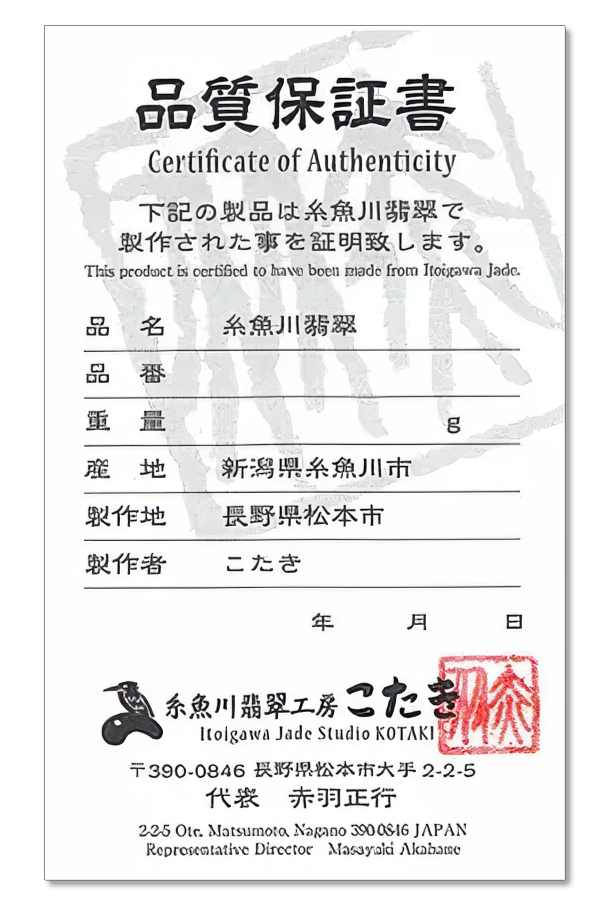
Yes, all our products come with a quality warranty.





